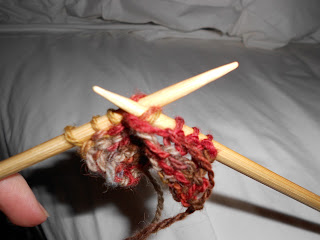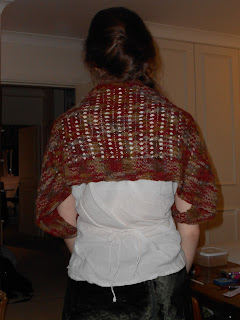You Will Need: Inspiration, sharp pencil and ruler, graph paper (light grey is easier to 'read' than green), eraser, coloured pencils of many colours.
A friend who knows my love of Vikings and embroidery brought me a book of Icelandic tapestry motifs. In combination with this background, I have a good, largely happy, large family. Less and less unusually as trends continue, I have been blessed with a pair of amicably divorced blood parents and a pair of hugely amicable step-parents, balancing the books rather til my cup of responsible adult company runneth over. For most of my young life I was able to visit all four of my grandparents, and only recently has this number decreased by one. My younger brother is the apple of my eye, and a talented maker and doer of Simple things in his own right - notably odd DIY and fire-starting.
 The first chapter of the book encourages you to make a sampler. Traditionally often made to commemmorate a new marriage or a birth, I was inspired to design a rather monumental one in memory of my current family setup, which has served me so well. I used further designs from later in the book to help me design the borders.
The first chapter of the book encourages you to make a sampler. Traditionally often made to commemmorate a new marriage or a birth, I was inspired to design a rather monumental one in memory of my current family setup, which has served me so well. I used further designs from later in the book to help me design the borders.The central motif is Yggdrasil, the World Tree and everlasting Ash; it endures despite being nibbled by four deer, a goat and Ratatosk the squirrel. Notice that the design of the leaves has four entry- and exit-points around the square, so that they can be rotated and joined onto each other and still look naturally growing without having to redesign every organic possibility. The circular design allows the roundels to shelter the animals, who can nestle in without me having to design around them.
At Yggdrasil's roots are the Norns, who tend it; its roots draw water from three sources, which are echoed in the watery blue border; lurking underneath it is the dragon, who forms the outer ring of the design.
Hanging in its branches is Odin, undergoing his quest to gain ultimate knowledge; sheltering at its heart are Lif and Lifthrasir, Life and Striver-for-Live, the last human beings and the first human beings who will survive Ragnarok and repopulate the new world. Each of these scenes is designed independently, by first making a rough 'normal' sketch lightly in pencil and then 'pixellating' it manually until the desired effect is obtained.
 The design is the Family Tree, and the names of the people most important to me will be embedded in the blue border using the alphabet design from the book. I expect this piece will take me several years to complete, if I ever do, as the sheer number of stitches involved is immense and I am bound to make counting errors and have setbacks. Nevertheless I intend to make a go of it alongside my other projects, coming back to it whenever I have nothing else going on, and leaving it out to reprimand me on my work-sofa whenever I come home. I will have to start from one corner of my fabric rather than the centre (as recommended by the tapestry book) because I cannot know how big it will end up being, and want to join any more required fabric to an edge with a border for accuracy.
The design is the Family Tree, and the names of the people most important to me will be embedded in the blue border using the alphabet design from the book. I expect this piece will take me several years to complete, if I ever do, as the sheer number of stitches involved is immense and I am bound to make counting errors and have setbacks. Nevertheless I intend to make a go of it alongside my other projects, coming back to it whenever I have nothing else going on, and leaving it out to reprimand me on my work-sofa whenever I come home. I will have to start from one corner of my fabric rather than the centre (as recommended by the tapestry book) because I cannot know how big it will end up being, and want to join any more required fabric to an edge with a border for accuracy.There is no reason for you to attempt such a ridiculously huge project of your own, but I do encourage you to design your own cross-stitch patterns on graph paper by pixellating sketches. Fabric can be cheaply acquired in relatively large quantities from online supplier www.cross-stitch-centre.co.uk. They are the Kemps Wool Shop of cross-stitch, or it looks that way to me.
















